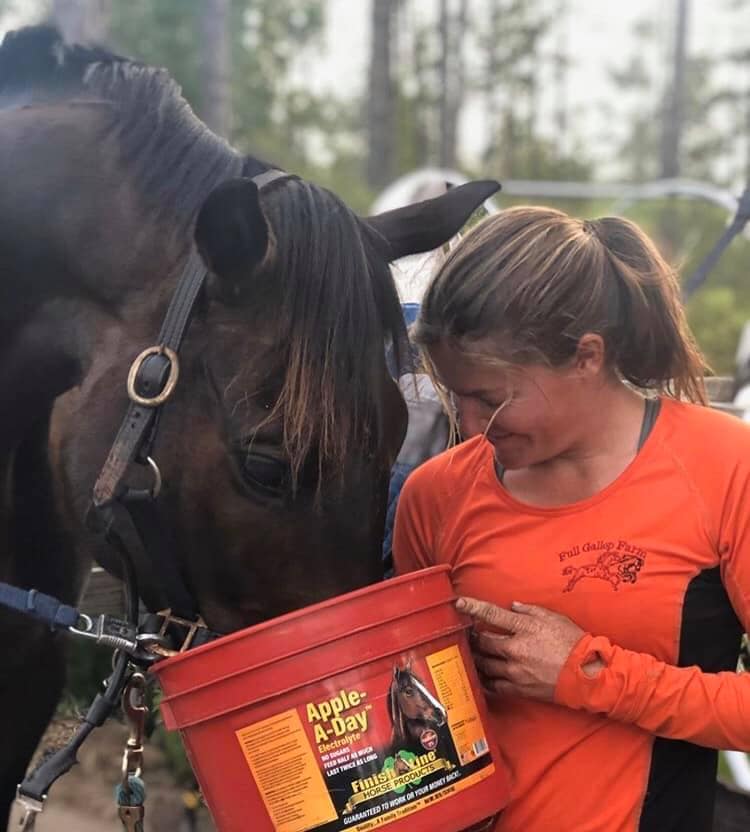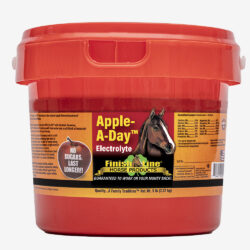Electrolytes are widely known to help boost recovery in humans and equines. But even though most of us have heard of electrolytes and gulp them down in sports drinks, chances are we don’t know exactly what they are or how to define them.
Electrolytes are electrically charged ions that play a key role in the normal function of cells and organs. They influence the amount of water in a horse’s body, the acidity of the blood (pH), muscle function and other important processes. When an equine sweats, it loses electrolytes, which must be replaced by drinking fluids or eating feeds that contain electrolytes. Pure water does not contain electrolytes. Horses that engage in performance, trail and show events – especially when travel is involved – require additional electrolytes to maintain optimal health and performance.
A horse’s muscle functions and nerve reactions hinge upon the proper exchange of these electrolyte ions inside and outside the cells. The two electrolytes lost in the greatest amount are chloride and sodium, which forms salt. Therefore, a proper electrolyte should be predominantly salt-based to meet a horse’s needs.
Common examples of electrolytes include:
- Calcium
- Potassium
- Magnesium
- Sodium
- Phosphorous
- Chloride
Electrolytes needed for muscle exertion
A muscle contraction requires calcium, sodium and potassium to be present. Improper electrolyte levels can result in either weak muscles or muscles that contract too often.
Muscles and neurons are viewed as electric tissues of the body – they are activated by electrolyte activity between either interstitial or extracellular fluid and intracellular fluid (fluid inside, outside or between cells). When dissolved in water, electrolytes separate into positively and negatively charged ions. A horse’s heart, muscle and nerve cells utilize electrolytes to maintain voltages across their cell membranes and to transport electrical impulses to other cells. Depletion of electrolytes can produce nerve irritability that leads to synchronous diaphragmatic flutter, or “thumps,” as well as reduced intestinal motility.
That’s why giving a horse an equine supplement can replenish its body’s supply, potentially enhancing muscle function as a result. Typically, 5 pounds of horse feed contain about an ounce of salt and 10 pounds of hay contain virtually no salt but will supply a decent share of potassium. It’s good to know that 1 to 2 volume ounces of a quality electrolyte/mineral supplement will provide about 1 to 2 weight ounces of salt.
Finish Line® Apple-a-Day™ helps promote healthy hydration in your horse by replacing electrolytes and minerals lost during daily activity, including sweating and urination. Apple-A-Day also aids in water consumption and appetite.












